Poodles: A Comprehensive Study
The poodle, with its iconic curls and air of sophistication, has become a beloved companion and working breed worldwide. Diving into the rich history and broad diversity of this remarkable dog, it becomes evident that the poodle has carved a unique spot in the dog world thanks to its intelligence, temperament, and adaptability. From the elegant Standard Poodle to the tiny, playful Toy Poodle, these dogs have captured the hearts of people across the globe for centuries.
History and Origin
The Poodle, a breed recognized for its luxurious curls and elegant appearance, traces its roots back to Germany. It is believed that the dog was initially bred in Germany during the 15th and 16th centuries as a water retriever, fetching waterfowl for hunters. The word “poodle” is derived from the German word “pudel,” which translates to “splash in the water.” Despite its German origin, the poodle gained its immense popularity and became the national dog breed of France.
The poodle’s unique coat served a practical purpose in addition to being a distinctive trait. The breed’s thick fur protected it from cold waters during hunting excursions. To improve their swimming abilities, hunters would clip the poodle’s coat in certain areas, leaving some fur on strategic body parts for warmth and protection. This clipping method, known as the “poodle clip,” is reminiscent of the modern-day style sported by show poodles.
Poodles are a highly versatile breed, coming in three sizes: standard, miniature, and toy. The standard poodle is the oldest and original variation, while the miniature and toy sizes were bred later for different functions. The smaller sizes were bred primarily for companionship and non-hunting purposes, commonly serving as lap dogs for French nobility. The poodle’s keen intelligence and easily trainable nature eventually led them to excel in various working roles beyond water retrieving, such as performing in circuses and serving as guide dogs.
As the breed’s reputation for intelligence, versatility, and elegance spread, poodles became sought after worldwide. They were imported to England and the United States in the late 19th century. The breed’s popularity in America rose dramatically during the mid-20th century, and the poodle became the most popular breed in the United States from 1960 to 1982. This rise in popularity led to further development of various sizes by breeders as they sought to cater to different preferences and needs of dog owners.
Renowned for their intelligence, trainability, and elegance, poodles have consistently remained a popular breed throughout history. With their extensive range of sizes, low-shedding hypoallergenic coat, and remarkable adaptability, poodles are cherished as companions and employed in various roles, such as therapy, guide, and service dog work. Their success in competitive dog sports like agility, obedience, and conformation speaks to their unique history and attributes, making the poodle an endearing and widely respected canine icon.
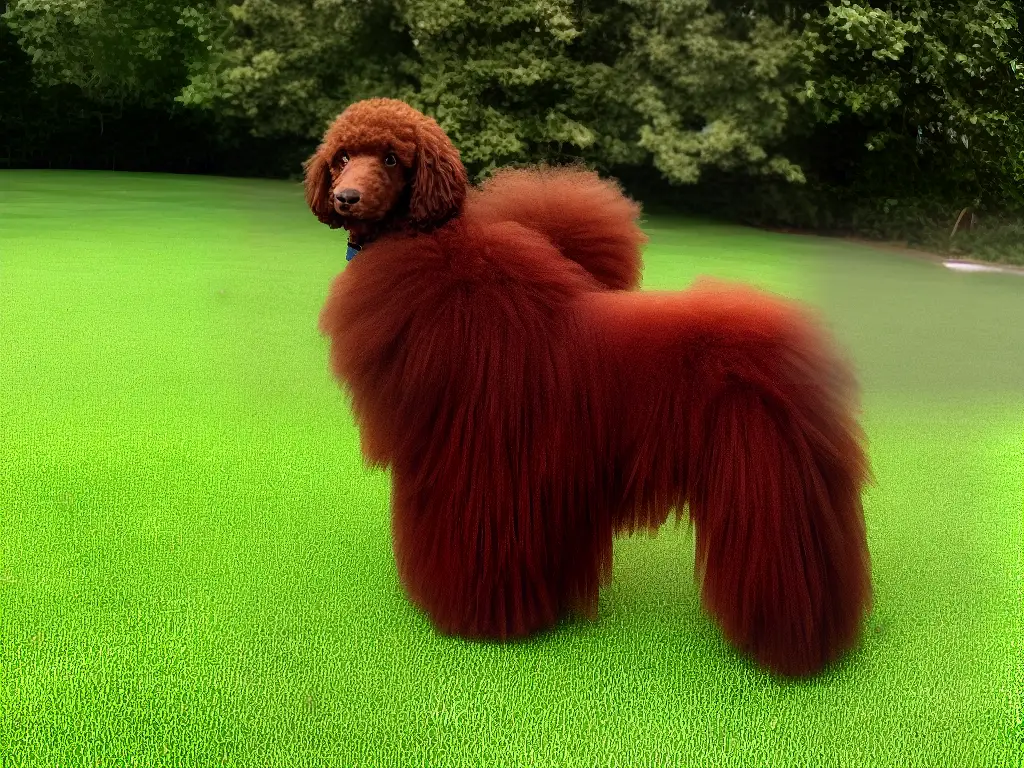
Types of Poodles
Originating from Germany, poodles are a versatile and intelligent breed that comes in a variety of sizes and colors, lending themselves as ideal pets for diverse families and living situations. Initially bred as duck hunters, poodles are famed for their exceptional water-retrieval abilities. Their distinctive coat – the ‘Poodle clip’ – was created to protect their joints and vital organs from the cold, allowing for easy movement while reducing weight. The breed’s curly, non-shedding coat has the added benefit of being hypoallergenic, making them suitable companions for those with allergies, and contributing to the poodle’s enduring appeal and success in various roles.
The three most common size classifications for Poodles are Standard, Miniature, and Toy. Standard Poodles are the largest and the most athletic of the three types. They typically stand between 18 and 24 inches tall at the shoulder and weigh between 45 and 70 pounds. Standard Poodles are known for their intelligence and athleticism, making them excellent working dogs and competitors in dog sports such as obedience, agility, and more. Their elegant, noble appearance has also made them popular show dogs.
Miniature Poodles, on the other hand, are smaller than Standard Poodles but bigger than Toy Poodles. They stand between 11 and 15 inches tall at the shoulder, and they usually weigh somewhere between 15 and 17 pounds. Miniature Poodles possess many of the same traits as their Standard counterparts, including intelligence, athleticism, and trainability. In addition to being family pets, they can also be successful assistance dogs, therapy dogs, or in other working roles. Miniature Poodles are also popular among urban dwellers due to their smaller size and adaptability to apartment living.
Toy Poodles are the smallest of the three types, standing no more than 10 inches tall at the shoulder and usually weighing between 4 and 6 pounds. Despite their diminutive size, Toy Poodles share the same high level of intelligence, trainability, and athleticism as the other two Poodle types, although they are more delicate due to their size. Toy Poodles make fantastic companions for individuals or families who want a small, intelligent, and affectionate pet, especially those who live in apartments or smaller homes with limited space. The tiny toy poodle is a popular choice for elderly individuals or those with mobility issues.
Poodles are not only known for their size variations, but also for their wide range of solid coat colors, such as black, white, apricot, silver, blue, gray, and brown. You can also find Poodles with more unusual coat patterns like the parti-Poodle, which has two or more colors, or the phantom Poodle, which has unique markings similar to a Doberman or Rottweiler. Maintaining their curly coats is crucial, as it can mat easily if not brushed regularly. Regular haircuts are also necessary to maintain their appearance and overall hygiene, as well as to prevent issues with their coat and skin.
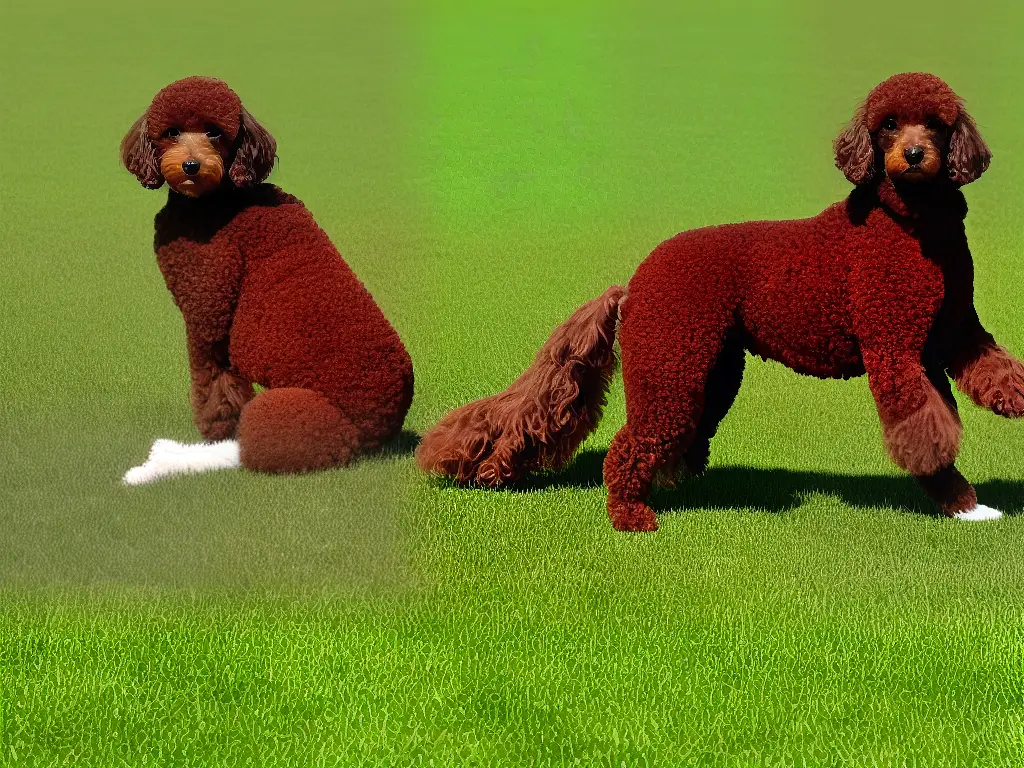
Poodle Temperament
While often recognized for their distinct appearance, Poodles possess an endearing temperament that contributes to their popularity. These intelligent dogs quickly adapt to different situations and excel in various tasks. Their friendly and loving nature has made them sought-after family pets, while their ability to learn quickly has put them in demand as working dogs. Poodles are known for their desire to please and affinity for human companionship, making them excellent companions for children, seniors, and everyone in between.
One of the defining traits of poodles is their intelligence. Ranked as the second most intelligent dog breed, poodles are highly trainable and excel in various tasks, such as obedience training, agility, and even therapy work. Their quick wit and natural curiosity make them fast learners, often picking up on commands after just a few repetitions. This level of intelligence allows poodles to be successful in numerous roles, including service dogs for the visually impaired or those with mobility challenges.
In addition to their intelligence, poodles possess a playful and eager-to-please temperament. These dogs are affectionate and bond closely with their human family members, which makes them excellent companions. Poodles tend to be good with children when raised with them, as their patient and gentle nature plays well with young ones. However, it is essential to socialize and train these dogs from an early age. Regular interaction and exposure to a variety of people, animals, and environments will help the poodle develop into a well-rounded adult.
Poodles are also favored for their innate athleticism and energy. This breed thrives when given regular exercise and mental stimulation, both of which are essential to maintaining their overall well-being. Poodles can be successful in various canine sports, such as agility, rally obedience, and dock diving. Their moderate to high activity levels mean that daily walks and engaging play sessions are necessary to keep boredom and potential destructive habits at bay.
While poodles are known for their intelligence and charm, they may also display some less-than-desirable characteristics, such as stubbornness and willfulness. These traits can pose a challenge during training, and poodles are prone to separation anxiety, potentially leading to destructive behaviors if left alone for too long. To ensure a well-behaved and happy poodle, it is imperative to establish a consistent routine, provide ample mental stimulation, and approach training with patience and understanding. With proper care, poodles can make delightful companions, bringing joy to their human families and anyone they meet.
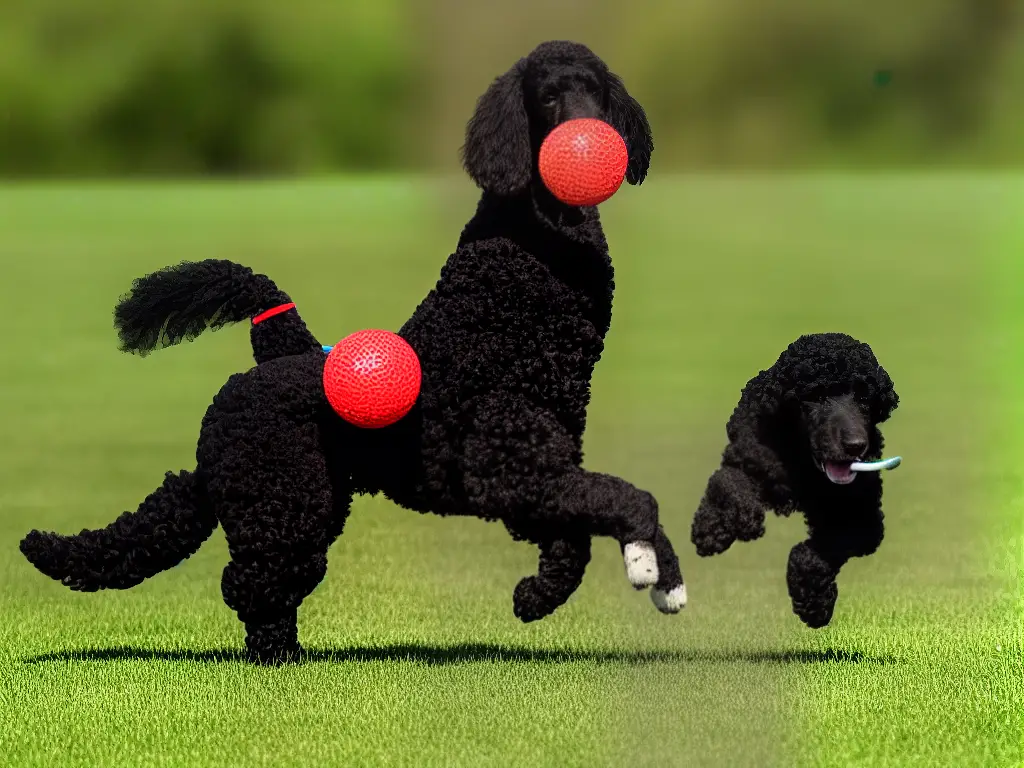
Poodle Grooming
In addition to training, grooming is a vital aspect of caring for a poodle’s health and appearance. A variety of grooming techniques cater to the needs of poodle owners, ranging from basic maintenance to advanced clipping and styling. The poodle’s unique curly coat demands special attention to keep it clean, tangle-free, and looking its best. Familiarizing oneself with these techniques and applying them accordingly will enable poodle owners to keep their beloved four-legged companions in peak condition.
Regular maintenance is the foundation of poodle grooming. It involves brushing and combing your poodle’s coat regularly to remove loose hair, prevent tangles, and distribute natural oils. This is important to maintain a healthy coat that is resistant to matting, which can be painful for your dog and challenging to remove. Poodles should be brushed daily if possible, or at least a few times a week, using a slicker brush for the outer coat and a fine-toothed metal comb for areas prone to matting, such as behind the ears and under the legs.
Clipping is often necessary for poodles, especially those with longer coats or those participating in dog sports or conformation shows. There are a variety of clip styles to choose from, including the sporty “puppy” or “kennel” clip, which leaves the hair longer on the head and body while clipping the hair short on the legs and face. The classic “continental” clip, often seen in show poodles, involves shaving the rear half of the body and leaving pom-poms around the ankles, as well as a mane-like ruff on the chest and back. Other popular clip styles include the “lamb” and “town and country” clips, which are more moderate and evenly trimmed options.
Sport and show cuts are designed to show off a poodle’s athleticism and elegance in the show ring or during performance events. These cuts typically emphasize the poodle’s structure, build, and proportions while removing any excess hair that could hinder movement or collect debris. The choice of cut style can vary by preference or the specific requirements of a competition or event. When preparing a poodle for a sporting or show event, it is essential to seek the guidance of a professional groomer, as these cuts require advanced grooming skills and knowledge of poodle anatomy.
Poodle coat care is an essential aspect of maintaining their overall health and appearance. A balanced, high-quality diet including essential fatty acids ensures a shiny and healthy coat. In addition, regular bathing with dog-appropriate shampoo and conditioner helps prevent skin irritation. Proper drying techniques are crucial to avoid potential skin infections or dampness-related issues. Through these grooming practices, you can ensure your poodle looks its best and keeps its beautiful coat for years to come.
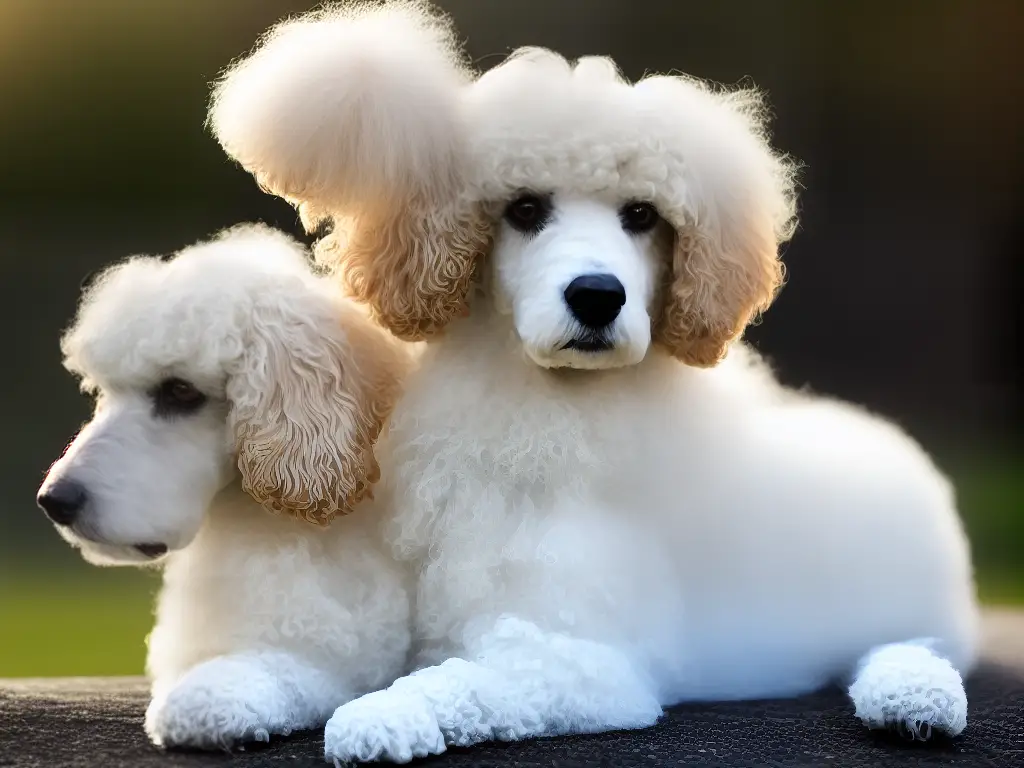
Poodle Health
Beyond coat care, poodles, like any other breed, are prone to various health issues. Common problems include hip dysplasia, progressive retinal atrophy, epilepsy, Addison’s disease, and sebaceous adenitis. Regular veterinary visits and screening tests can facilitate early detection and treatment, promoting the overall well-being of your beloved poodle.
Aside from the usual vaccinations and preventative medication for parasites, regular veterinary care plays an essential role in maintaining your poodle’s health. Veterinarians can not only detect common health issues early but can also provide guidance on proper nutrition, grooming, and care specific to your poodle’s needs. Establishing a good relationship with your vet will enable them to better understand your poodle’s unique health requirements and provide the necessary recommendations to keep them in optimal wellbeing.
A well-balanced diet, rich in nutrients, and customized for your poodle’s age, weight, and activity level is crucial for maintaining their health. Ensure that you are feeding them high-quality dog food that meets the dietary guidelines established for their specific needs. Consult with your veterinarian to determine the appropriate diet and portion size for your poodle, as overfeeding can lead to obesity, which in turn puts them at risk for other health issues.
Regular exercise is essential for maintaining your poodle’s physical health, as well as preventing obesity and associated health risks. Poodles are energetic and athletic dogs, so they require daily exercise and mental stimulation to keep them happy and healthy. Activities such as walking, swimming, playing fetch, or participating in dog sports like agility are great ways to keep your poodle active, both physically and mentally. Mental stimulation is also crucial because it fulfills their natural inclination to be problem solvers and engage their minds.
Poodles are highly intelligent and easily trainable dogs, well-known for their eager-to-please nature. This makes it essential for their mental health to provide not only physical exercise but also cognitive stimulation. Engaging your poodle in training sessions, teaching them new tricks, and providing them with puzzle toys can help maintain a healthy mental state. This not only prevents boredom-related behaviors like destructive chewing but also allows for a stronger bond to form between you and your poodle, contributing positively to their overall health and happiness.
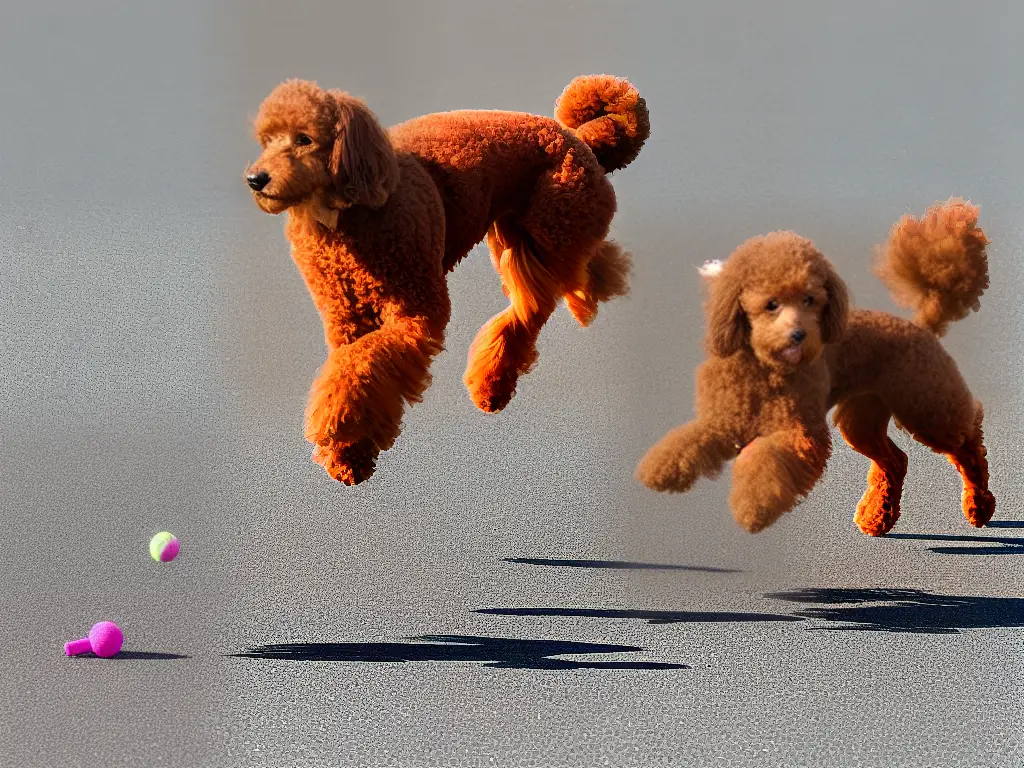
Training and Obedience
Given their intelligence, training and obedience are crucial aspects of raising a well-adjusted and well-behaved poodle. It’s ideal to begin behavior training as early as possible, preferably when the poodle is still a puppy. This early start helps to swiftly develop good habits and a strong foundation that can be built upon as the dog matures. Continuously engaging your poodle in various exercises and mental challenges strengthens your bond and ensures the long-term happiness and well-being of your furry friend.
Positive reinforcement is the best practice when training a poodle. This approach rewards the dog for performing desired behaviors, rather than punishing them for undesirable actions. Praise, petting, and treat rewards can be particularly effective in motivating poodles, who often respond well to verbal praise and physical affection. As with most dogs, consistency is key – ensure that you are using the same cues and commands each time, and that all family members are on board with the training plan.
Socialization is a crucial aspect of poodle training. Introducing your poodle to a variety of people, animals, and situations will help them develop confidence and a calm demeanor. Puppy training classes or play-dates with other dogs provide excellent opportunities for socialization. In addition, training classes can also provide a structured environment for you and your poodle to learn together, alongside experienced trainers who can offer valuable guidance and support.
Overcoming common challenges in poodle training may include addressing the breed’s sensitive nature. Poodles may become anxious or fearful if exposed to loud noises, harsh tones, or negative experiences during training sessions. To avoid this, always maintain a positive demeanor and use a gentle tone when issuing commands. If your poodle is particularly sensitive or resistant to training, consider seeking assistance from a professional dog trainer who can offer tailored advice and training techniques.
Mental stimulation is essential for a breed as intelligent as the poodle. Obedience training should be reinforced by regularly incorporating learning exercises that challenge your dog mentally. Puzzle toys, interactive games, and engagement in canine sports such as agility or obedience competitions can all provide mental stimulation and help to promote a well-rounded, happy dog. Poodles have often been described as “thinking dogs,” and a well-trained and well-socialized poodle can be a joy to live with – and a true reflection of the bright, amiable nature of this wonderful breed.
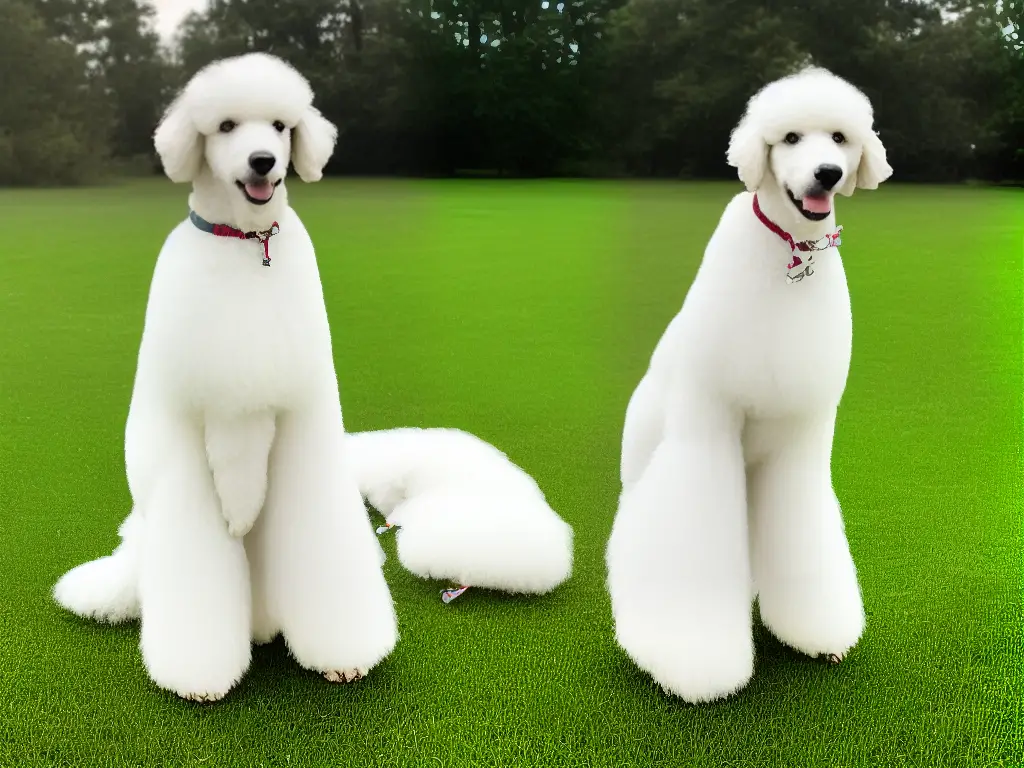
Poodles in Popular Culture
In addition to their intelligence, poodles have also been celebrated for their elegance and refinement in popular culture. For instance, the 1953 classic film “The Lady and the Tramp” features Peg, a sophisticated Pekingese/Poodle mix who sings the memorable song “He’s a Tramp”. This portrayal highlights the poodle’s cultural prominence as a symbol of sophistication. Other films, such as “Annie” (1982) and the comedy mockumentary “Mondo Poodle” (1997), further reinforce this glamorous reputation. Understanding poodles’ rich history and cultural significance adds another layer of appreciation for this intelligent and amiable breed.
In television programming, poodles have often assumed notable roles as both faithful and loving pets and redoubtable foes. For example, in “Hart to Hart,” a popular American series that aired from 1979 to 1984, protagonists Jennifer and Jonathan Hart enjoy the companionship of Freeway, a mixed-breed dog of Poodle lineage. This pet –inquisitive, smart and dependable – truly becomes a crucial member of the detective duo. Similarly, long-running sitcom “Frasier” (1993-2004) showcases a Jack Russell terrier/poodle mix named Eddie, who quickly becomes an integral part of the show’s comedic structure. The dog’s personality and humor demonstrate the adaptability and intelligence of poodles and illustrate that their charms can extend beyond their fancy, curly-haired exteriors.
In literature, poodles are frequently portrayed as symbols of affluence and high society, as seen in F. Scott Fitzgerald’s novel “The Great Gatsby”. Here, Tom and Daisy Buchanan host a dinner party where their unnameable Poodle trots around as the epitome of lavish wealth and opulence. In children’s books, a brave and adventurous Poodle takes center stage in the “Pippin and Mabel” series by K.V. Johansen. These stories follow the exploits of a young girl and her feisty pet Mabel, showcasing the determination and resourcefulness of Poodles as well as their devotion to those they love.
Though poodles have a rich history as compelling characters in various forms of media, their popularity is not limited to the realms of fiction. Many well-known figures, both past and present, have recognized the distinctive appeal of this dog breed and embraced them as beloved pets. For instance, famous historical figures like Marie Antoinette, Josephine Bonaparte, King Louis XVI, and Elizabeth I were all known to have kept poodles in their royal courts. More recently, celebrity fans of the breed include notable names such as Meryl Streep, Lucille Ball, and Marilyn Monroe.
Poodles, known for their intelligence and unique curly coats, have not only become popular household pets but have also garnered a unique reputation on the political stage. Several U.S. Presidents, including John F. Kennedy and Richard Nixon, took poodles with them to the White House. Kennedy’s pet, a standard poodle named Gaullie, was given to him as a gift from the French president Charles de Gaulle, highlighting the breed’s longstanding connection with France. Similarly, Nixon owned an apricot toy poodle named Vicky during his presidency. These examples serve to underscore poodles’ enduring popularity, as well as their capabilities for providing steadfast companionship and unwavering loyalty to their human counterparts.

Breeding and Ethical Considerations
With their increasing popularity, it becomes crucial to understand that breeding poodles involves more than just pairing two dogs together and expecting puppies. It is a process that should prioritize the health and welfare of the dogs and puppies involved. Responsible poodle breeders understand the importance of ethical breeding practices to ensure the well-being of the breed for future generations, maintaining their reputation as beloved companions both in and beyond the White House.
An essential component of ethical poodle breeding is testing for genetic health issues that can affect the breed. Poodles can inherit conditions like hip dysplasia, progressive retinal atrophy (PRA), and von Willebrand disease (vWD). By testing breeding dogs for these genetic disorders, breeders can reduce the risk of passing these conditions on to future generations, helping to improve the breed’s overall health.
Additionally, responsible breeders will also research a prospective breeding pair’s pedigree to ensure genetic diversity and avoid inbreeding, which can lead to a multitude of health problems.
Responsible poodle breeders also prioritize proper care and socialization for the puppies they produce. They provide a clean, safe, and nurturing environment for the puppies and their mothers, monitoring their health and ensuring that they receive necessary vaccinations and veterinary care.
Adequate socialization is a critical aspect of a puppy’s upbringing, as it helps to shape the dog’s temperament and adaptability to different environments and situations.
To further promote ethical breeding practices, responsible poodle breeders often maintain a relationship with the puppies’ new families and provide ongoing support and guidance.
Another important aspect of ethical poodle breeding is the focus on education. Breeders who invest time and effort into educating themselves about poodle genetics, health, and breeding practices are better equipped to make informed decisions about the care and breeding of their dogs.
Ethical breeders are often involved in breed-specific clubs and organizations to share their knowledge with other breed enthusiasts. They also take an active role in ensuring that potential puppy owners understand the unique characteristics and breed-specific obligations associated with poodles to promote responsible ownership.
In conclusion, it is vital for our poodle-loving community to support ethical breeding practices and promote the responsible breeding and ownership of poodles. By advocating for genetic health testing, proper care, and socialization, and by focusing on education and collaboration, we can work together to protect the health and well-being of this beloved breed for generations to come.
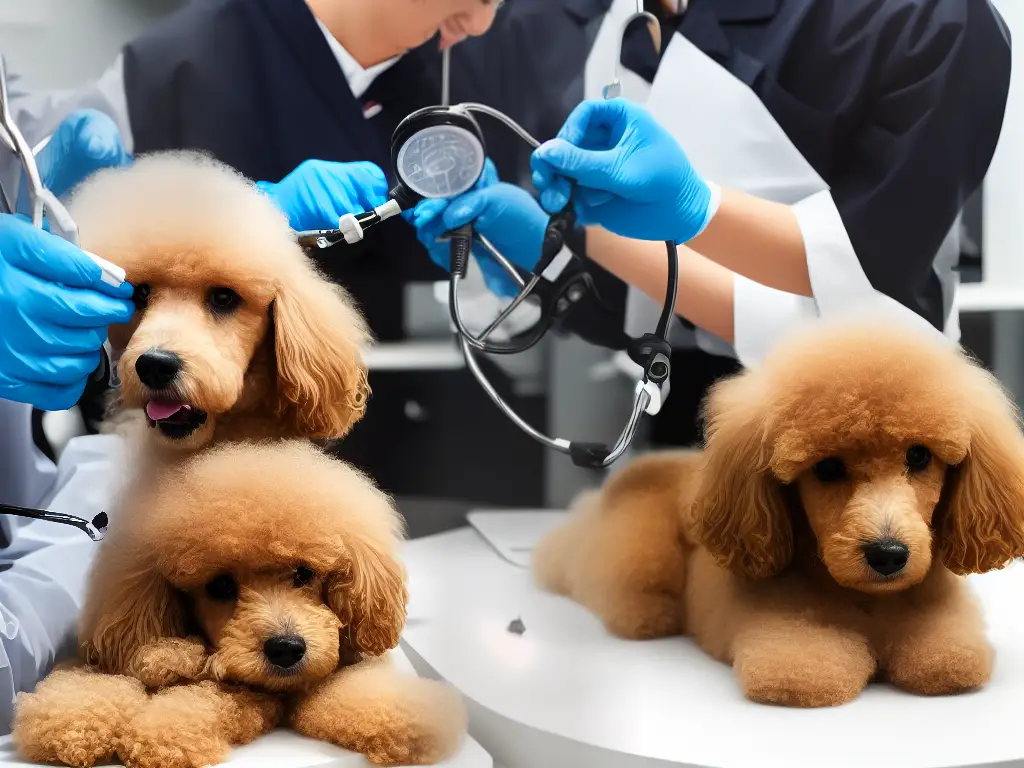
As we have journeyed through the world of poodles, it is clear how these remarkable dogs have found their places in our hearts and homes over the years. Understanding and embracing the ethical breeding practices, proper grooming, and ongoing health care and training will ensure this breed’s continued success in countless roles – companions, show dogs, and athletes alike. The poodle’s diverse qualities and captivating presence have secured its enduring popularity in popular culture and in the many lives it touches each day.
